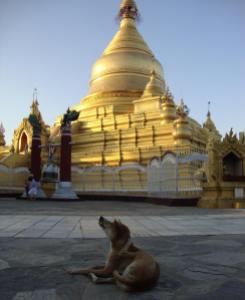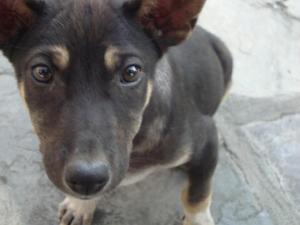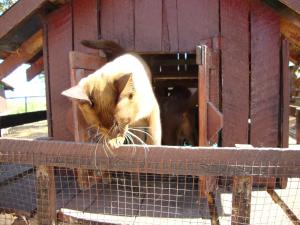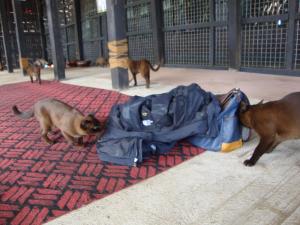I am a visionary!
Last night before going to bed I saw an email that made reference to an opinion piece in the Chicago Tribune (here) about supposed Vietnamese eating habits.
The author – “Joel Brinkley, a professor of journalism at Stanford University, [and] a Pulitzer Prize-winning former foreign correspondent for the New York Times” – makes absurdly reductionist/essentialist points about the histories and cultures of the Vietnamese and their Southeast Asian neighbors.
So why am I a visionary? Because upon seeing that article, I predicted that many people would comment on it, and indeed this morning I woke up to find my inbox full of comments about this sensationalist piece of writing. . .
Personally, I find the article too absurd, and the author too irrelevant, to respond to. However, if anyone wants to get a sense of how deeply ignorant about Southeast Asia some people continue to be even in the information-saturated age we live in today, click on the link above and take a look.
So rather than comment on that article, I thought this would be a good time to share some pictures I took recently of cats and dogs in Burma. . . which if we follow Brinkley’s argument. . . are fortunate to be alive today because they live in a country of non-aggressive vegetarians. . .
While you can find dogs hanging around plenty of temples in Burma (the tile walkways are great if you are a dog – cool in the shade, warm in the sun), Shwe Inn Thein Pagoda on Lake Inle with its 1,000 stupas is a particularly good place. On both of the occasions that I’ve been there I’ve found mother dogs that have given birth to puppies inside stupas.
Lake Inle is also good for cats too. The Nga Phe Kyuang/Jumping Cat Monastery (with cats that “perform” for visitors by jumping through a hoop and then getting rewarded with a piece of dried fish) is of course very famous.
On this last trip, I arrived there at about five o’clock in the afternoon, which apparently is the end of the “work day” for the cats. Their bellies were full with dried fish and their legs were tired from jumping all day, but tourists were still trying to take pictures of these “superstars”. . .
Not far from the Jumping Cat Monastery I found a place called the Inle Heritage House that has a display of “Burmese Cats.” These cats have their own “Burmese Cat Village” where they can hang out and welcome guests into their houses. . . if you can fit.
Or they can cross a bridge into the main building, on the second floor of which is a restaurant that serves. . . (oh, don’t tell Brinkley this!). . . meat.
According to an explanatory sign at this Inle Heritage House, what people around the world call “Siamese” cats and actually “Burmese” cats and the display of “Burmese” cats at the Inle Heritage House is meant to educate people about these beautiful animals.
This desire to clarify this point struck me as a bit nationalistic, and made me think of something else that Brinkley either doesn’t know about or is conveniently forgetting, namely the long history of warfare and “aggression” among the “Buddhist” peoples on the Southeast Asian mainland – a history that is now central to many nationalist narratives of the past.
Oh, is this moralizing lecture putting you to sleep?
Right, let’s get back to the cats and dogs. . . I came across this friendly guy at In Paw Khone, a market town on the shore of Lake Inle. It’s definitely not easy to take pictures of cats and dogs because they just don’t want to stay still. . . but this little guy was willing to pose for a nice shot.
Thanks for the pictures, friends!!











This Post Has 4 Comments
The authorities cull a large number of cats and dogs by feeding them poison, especially the pregnant ones and including those in temple precincts. Buddhist?
We once took this stray to a vet who removed the dead foetuses in her womb right before our eyes. It was a very Buddhist experience.
Thanks for the comment.
First of all, the title I have here doesn’t really make much sense. . . are the cats and dogs “Buddhist”? No. . . I looked back at that title and realized that it doesn’t make sense, but I’m too lazy to change it at this point. . .
In any case, your comment gets to the issue that has many people upset about Joel Brinkley’s article, namely that there is more to mainland Southeast Asia than meets the eye.
I read one person write that while you might not hear many birds in Vietnam, one reason this might be is because the overuse of pesticides could be killing the insects that certain birds survive on – that’s a different reason from claiming that the Vietnamese are aggressive meat-eaters who consume everything that moves.
And yea, what you point out here is good. You might see a lot of dogs walking around Burma, but you don’t see the ones that get killed. It’s not that dogs have it better there than in other places.
Yup, frames like “Buddhist”, “Burmese”, “Thai” and “Southeast Asian” don’t necessarily tell much of a story at the end of the day, which is what your blog demonstrates so vividly. Actually I thought this blog entry made its point all the more clearly by referring to the cats and dogs as “Buddhist” – precisely because “Buddhist” makes no sense! 😉
We need to thank these prize-winning journalists for the constant divertissements. And thanks for the post and reply too. 🙂
So by not making sense the title actually makes sense. . . I like it! Thanks!! 😉